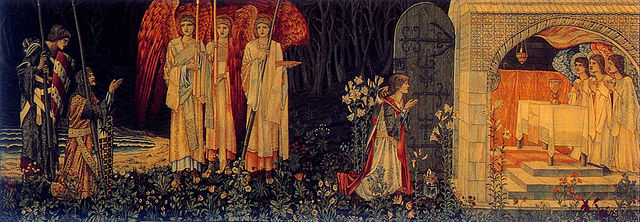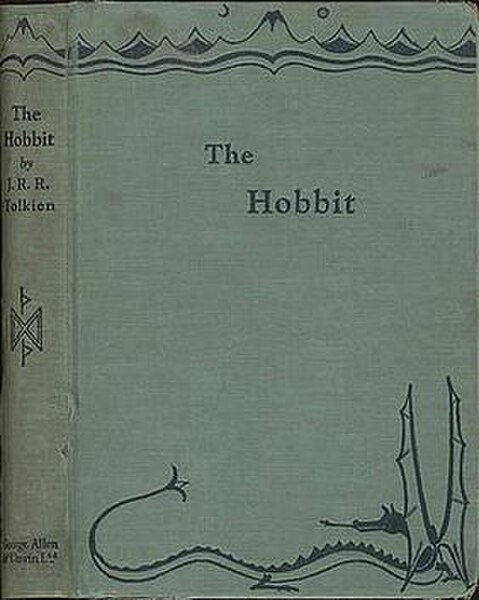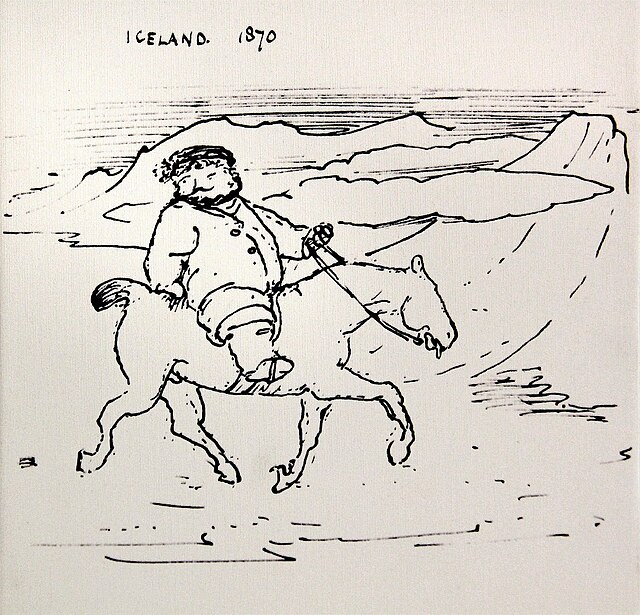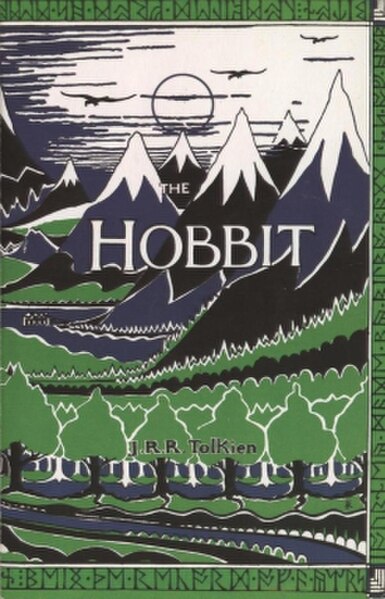J. R. R. Tolkien's best-known novels, The Hobbit and The Lord of the Rings, both have the structure of quests, with a hero setting out, facing dangers, achieving a goal, and returning home. Where The Hobbit is a children's story with the simple goal of treasure, The Lord of the Rings is a more complex narrative with multiple quests. Its main quest, to destroy the One Ring, has been described as a reversed quest – starting with a much-desired treasure, and getting rid of it. That quest, too, is balanced against a moral quest, to scour the Shire and return it to its original state.
Allegorical portrait of a knight reaching his princess at the end of his quest. In the background, he kills a dragon. Workshop of Lucas Cranach the Elder, c. 1515–20
Unlike a typical quest like seeking the Holy Grail of Arthurian legend, Frodo's is to destroy an object, the One Ring. Vision of the Holy Grail by William Morris, 1890
The Hobbit, or There and Back Again is a children's fantasy novel by the English author J. R. R. Tolkien. It was published in 1937 to wide critical acclaim, being nominated for the Carnegie Medal and awarded a prize from the New York Herald Tribune for best juvenile fiction. The book is recognized as a classic in children's literature and is one of the best-selling books of all time, with over 100 million copies sold.
Cover of the 1937 first edition, from a drawing by Tolkien
Bilbo's role as burglar places him in the trickster tradition of figures like Prometheus who stole fire from the gods. Painting by Jan Cossiers, 1637
Bilbo's character and adventures match many details of William Morris's expedition in Iceland. 1870 cartoon of Morris riding a pony by his travelling companion Edward Burne-Jones
Dustcover of the first edition of The Hobbit, taken from a design by the author






